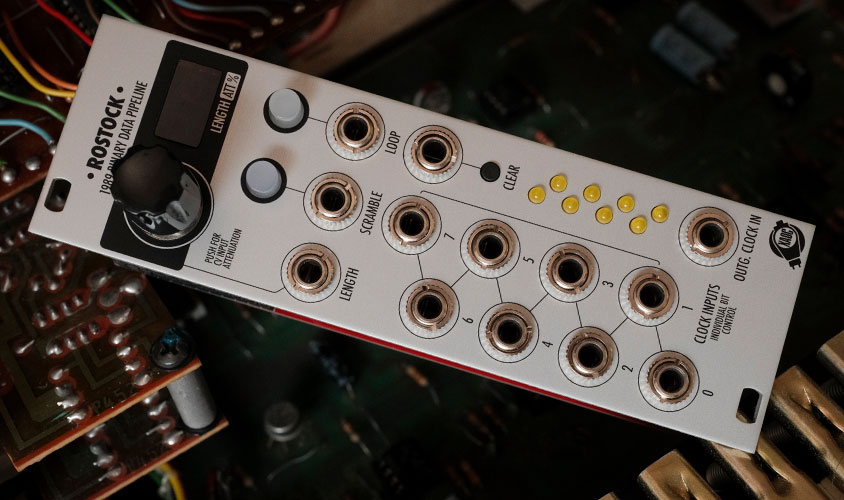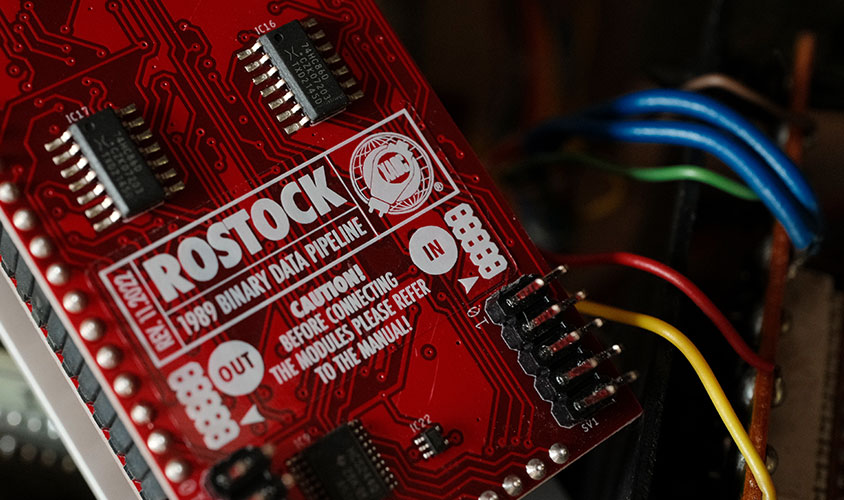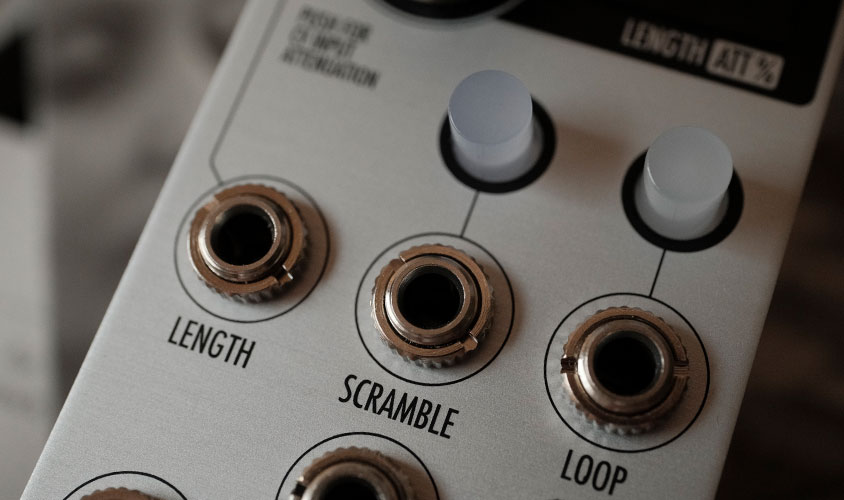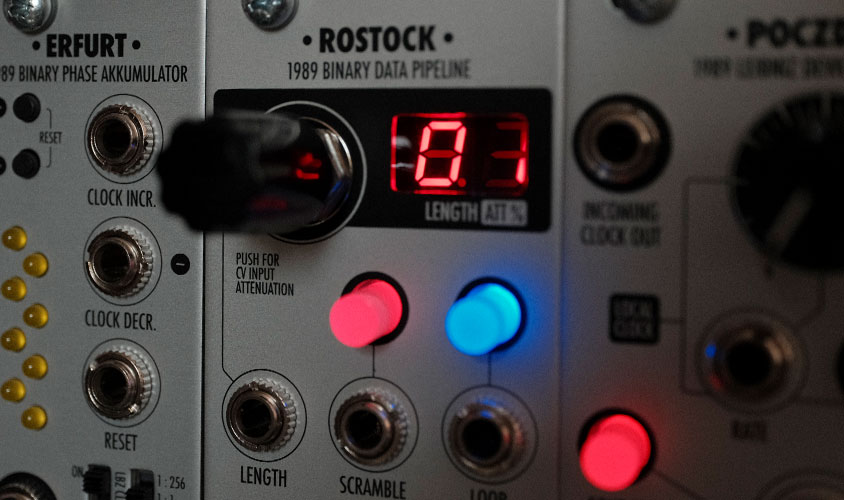Rostock
Rostock
Binary Data Pipeline
Model of 1989
Resources
Description
Rostock [ˈrɔstɔk] is a data pipeline, a FIFO (first in—first out) shift register, or a very short digital delay. Its length is variable from 1 to 64 stages (with optional looping and scrambling). Rostock is a component of the Leibniz Binary Subsystem—a family of digital modules that operate on 8-bit data. It works by processing data in the Leibniz bus and must be connected to other Leibniz modules using data ribbon cables at the back. Rostock may process data sequences representing rhythms, control voltages, audio-rate signals, and even video signals because the bits can change at extreme rates (up to 2MHz). In addition, its memory may be digitally looped. Delaying and looping is a fundamental building block for sequence automation, pattern and chaos generation, and various cybernetic modular patches. Thus, Rostock is a multi-purpose open-ended device that invites creative thinking. For detailed description, please refer to the manual.
Features
- Component of Leibniz Binary Subsystem
- Shift register / delay memory of up to 64 stages
- Voltage controlled length
- Looping and scrambling
- Optional individual clock input to each bit line
Technical details
- 8hp, skiff friendly
- Current draw: +70mA/-40mA
- Reverse power protection
Expandability
Drezno is the input/output front-end of the system, consisting of an analog–to–digital converter (ADC) and a digital–to–analog converter (DAC), that alone can be used for manipulating analog signals and voltages based on their binary representation.
Lipsk is a binary logic processing expander module that can flip (invert) individual bits of the digital signal representation. There are more Leibniz Binary Subsystem elements coming, with specialized and advanced sets of features.
Gera features eight individual gate inputs that affect the corresponding individual bits of the Leibniz data. The primary function of Gera is masking individual bits of the digital data through the AND operation.
Poczdam is a binary data routing solution for the Xaoc Leibniz Subsystem. It facilitates manual and remote switching between two Leibniz data sources.
Erfurt is a bi-directional digital counter, frequency divider. It has multiple applications: the output of the counter may be used as a phase source driving a digital wavetable, connected to other Leibniz modules it may scan waveshapes in Jena, produce stepped voltages useful for making interesting glissandi with Drezno and any VCO, generate gate patterns animating the spectrum of Odessa harmonic banks, spawn pseudo-chaotic sequences when fed back to Lipsk, etc.




